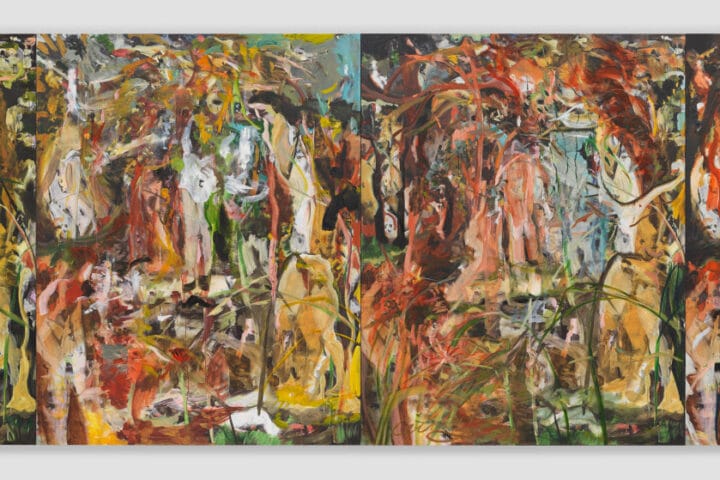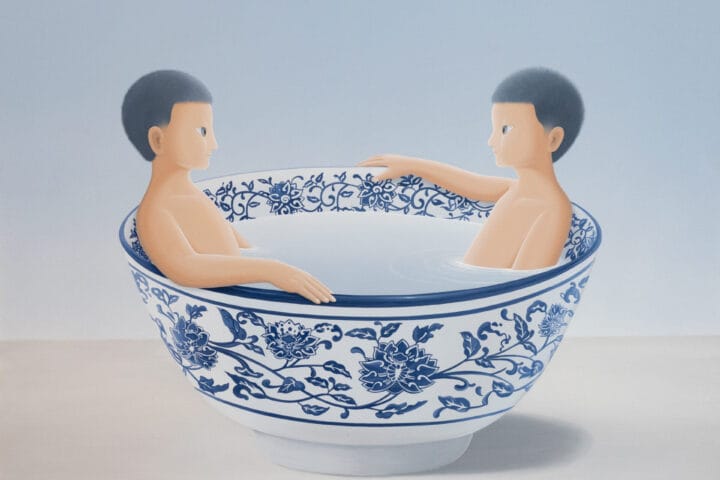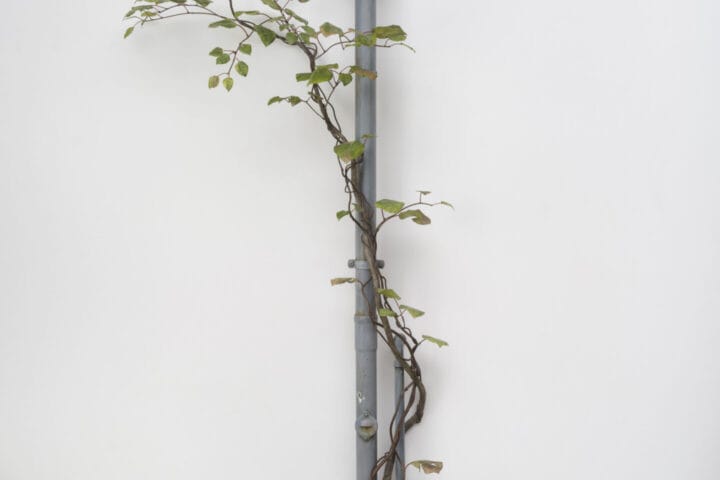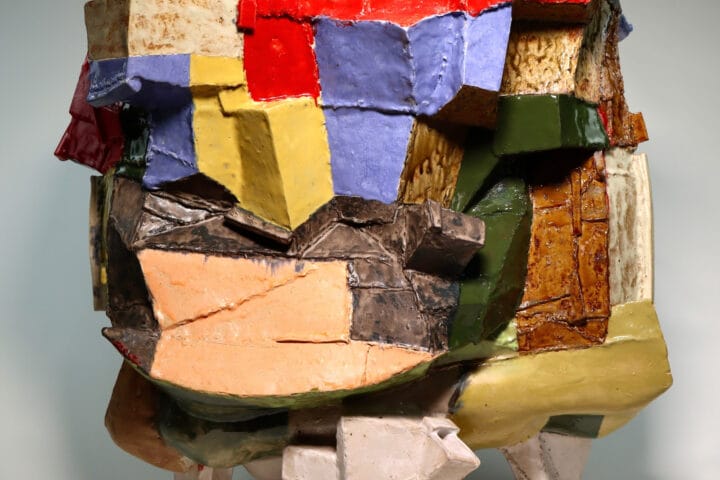Blindspot Gallery is proud to present Un Cheng’s exhibition What’s there when you ain’t home, encapsulating a visual journal of the restless wanderer-painter in Iceland and Sham Shui Po. No two landscapes can be more different than the sparse winter of a Nordic Island and the hectic urban subtropics of Kowloon. Yet, the artist ravishes in the amorphous abstraction of atmospheric light, thick textures of oil, vibrant blocks of colours, and strokes of falling snow and rising vapour. Resonantly, these psychological landscapes lay bare the desire of an itinerant artist-traveller to resist loneliness, forge human connections, and fall in love with an eclectic world that at times feels geographically isolated and emotionally indifferent.
The exhibition’s centerpiece is a grand two-meter painting titled No Man is an Island (2020-2022). This fictional psychological landscape serves as a carrier bag of the artist’s turbulent emotional experiences over the last two years. A candy-colored carousel stands amidst a deserted amusement park framed by unwieldly strewn chairs. The brewing storm scatters and threatens all, while celebratory fireworks bloom conflictually in the background. Framed in the center are three portraits, in lieu of prince charming and Cinderella, feature the artist’s self-portrait in the middle, a Lolita-garbed murderer on the left (sinister), and a praying angel on the right (dexter). Rhapsodic, untamed, and unsettling, No Man is an Island is an allegorical scene that expresses the occurrence of internal suffering without recourse of external redemption, a dark fairy tale warning the cruel optimism in the artist’s vision of benevolent order and security.
Escaping the violent foreclosure of relational possibility in the wishfully titled No Man is an Island, Cheng’s Iceland series comprise of paintings that reference memories and photographs of real-life situations, the artist’s desperate attempt to get out of her head and be in the world. Channeling her three-month residency in the winter of 2018, the artist creates canvases completely devoid of human figures yet bears enough human traces to suggest their deliberate absence in the deep winter of a sparsely populated island. Anonymous storefronts, pavilions, and parked cars emerge from layers of glistening snow, while Christmas trees discarded from their festive moments casually stand erect or lie horizontal in public.
The artist is utterly alone out there because everyone is home. Alien in the landscape, the artist retreats to her internal dialogue, finding companionship in her own wondrous whims and child-like imagination. Death of Xmas Tree (2021) is a play on Death in Venice, the famous Thomas Mann novel adapted into film by Visconti (1971), where a composer escapes ennui in a foreign city and becomes fatally attracted to a beautiful young boy. 23:48 The Night Bus That Never Came (2021) is based on the wait for a 9-hour overnight bus ride from Akureyri to Reykjavik, demonstrating how the expectation of waiting and eventual disappointment are heightened in the approach of midnight, an arbitrarily magical moment that marks today from tomorrow.
Leaving behind the escapist Romanticism in Iceland, Cheng immerses herself in the ephemeral sensorium of stimuli, observation, and dialogue in her local neighborhood. In the Sham Shui Po series, Un Cheng depicts the idiosyncrasy of the working-class, multicultural, and rapidly gentrifying district in Kowloon, where since 2020 Cheng has had her artist studio that doubles as her living space. The artist chronicles her nightly jaunts on the streets as her restless body struggles to stay at home. With a dash of magical realism and local Cantonese humor, these paintings depict quirky neighborhood sites and lore unbeknownst to daytime café goers and instagrammers: Boundary Pho (2022) captures a noodle shop that escapes the omni-surveillance of google map; Salon Rejuvenato (2022) imagines a synthesized medley of nearby hair salons rumored to give clients lost youth; Gluey Life (2022) recreates a scene where Cheng’s own apartment erupts in fire, the title a homonym in Cantonese for being utterly knackered mentally and physically.
Moreover, these scenes document the artist’s fleeting encounter of the zany characters in a loosely defined marginalized community, such as the flamboyant rider of a DIY electric mobile scooter in XX Flagman of Maple St. (2022), and the impertinent elderly nighttime food hawker of Ah Po Calls My Bluff (2022). The most touching encounter is perhaps the intimate scene in Love Methadone (2022), when an outcasted boombox-playing man dances spontaneously with his interracial wheelchaired lover along the Tsim Sha Tsui harbor front. Embedded in Un’s insistent search for midnight connection is an earnest humanism that wishes for an emerging public of intimacy, an expansive definition of love, and an inclusive community of commiserating outcasts including strangers and herself.
The French Symbolist poet Arthur Rimbaud quipped in Une saison en enfer (A Season in Hell, 1873) that “Love has to be reinvented”. Cheng’s practice realizes an analogy of this verse from the legendarily itinerant poet, that to love properly, Home has to be reinvented. For a young artist whose home is not here, home is in exile, home is where we are.
Blindspot Gallery
Blindspot Gallery ????
15/F, Po Chai Industrial Building
28 Wong Chuk Hang Road
Wong Chuk Hang, Hong Kong











